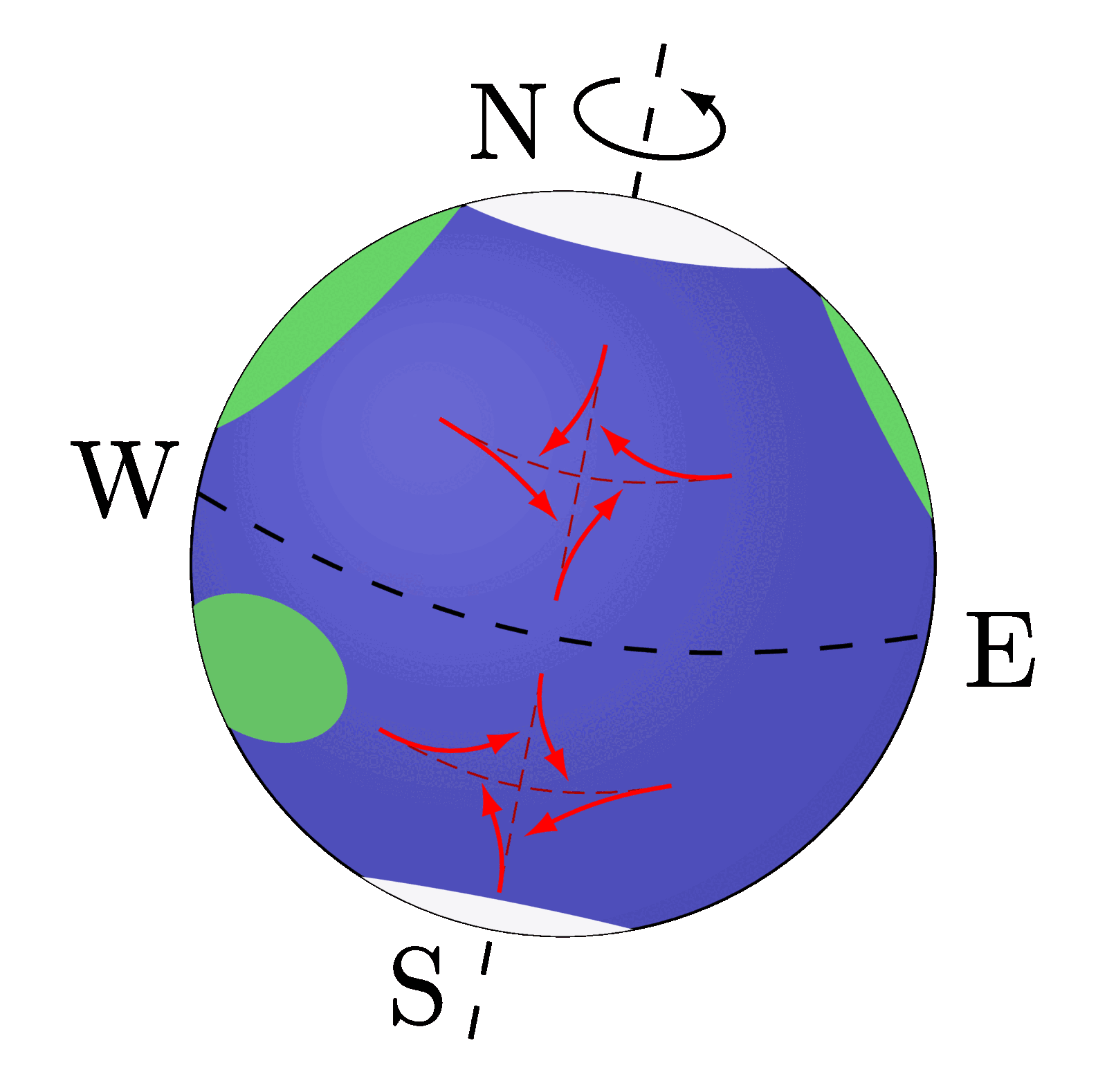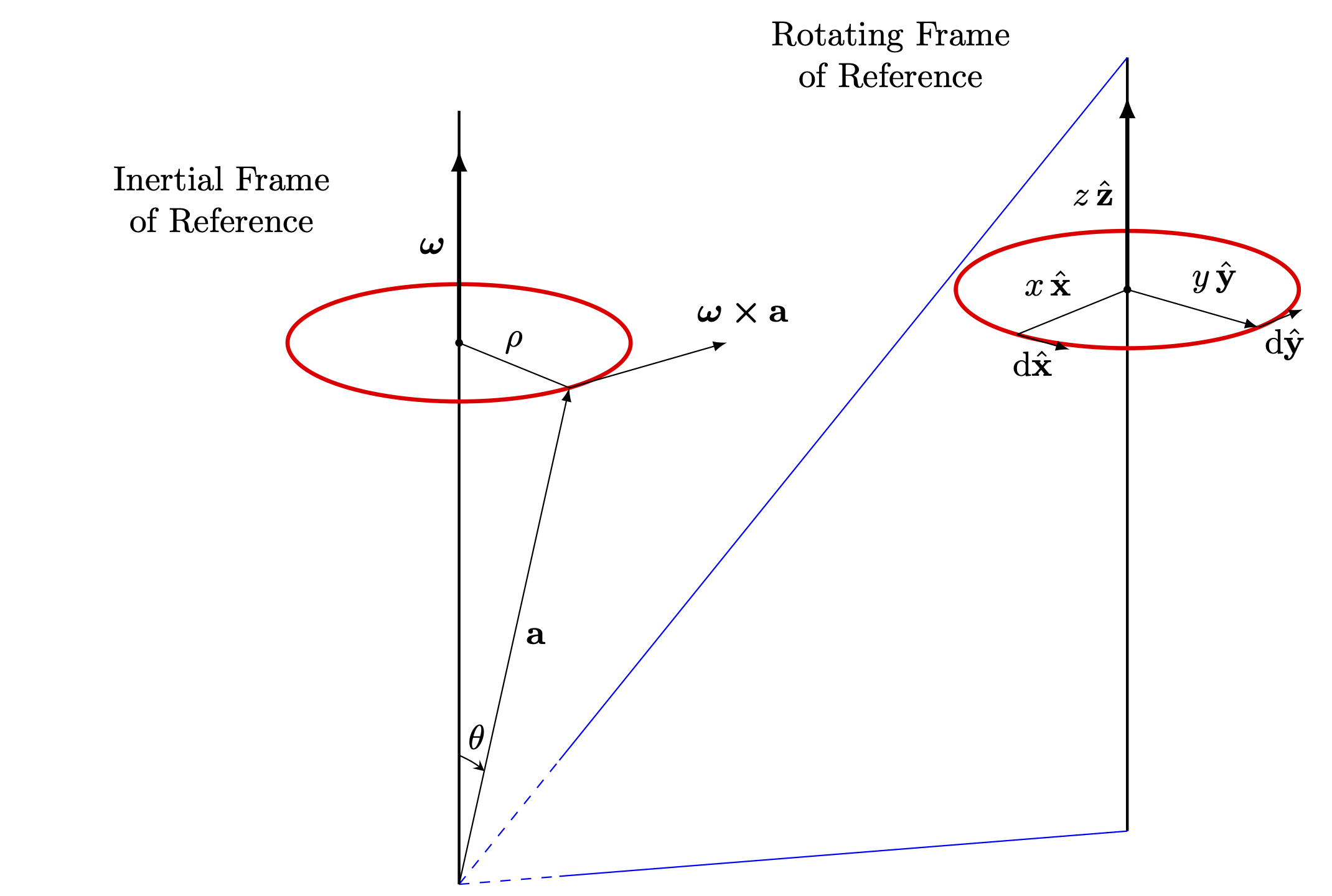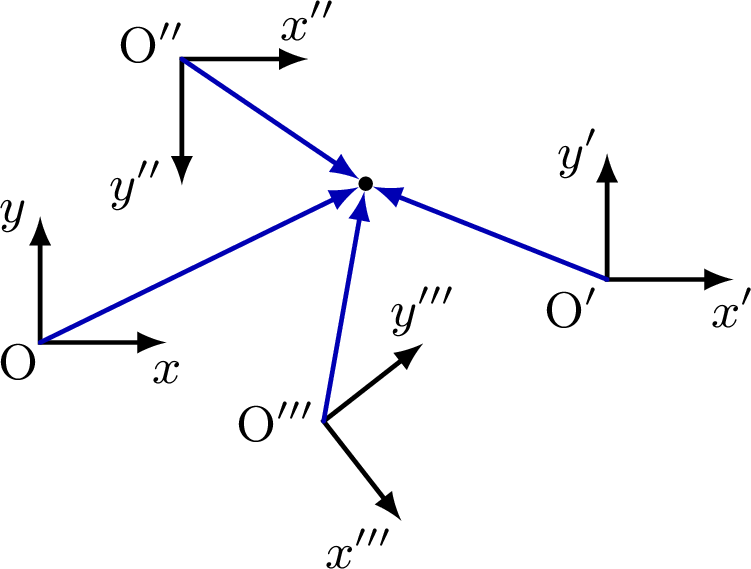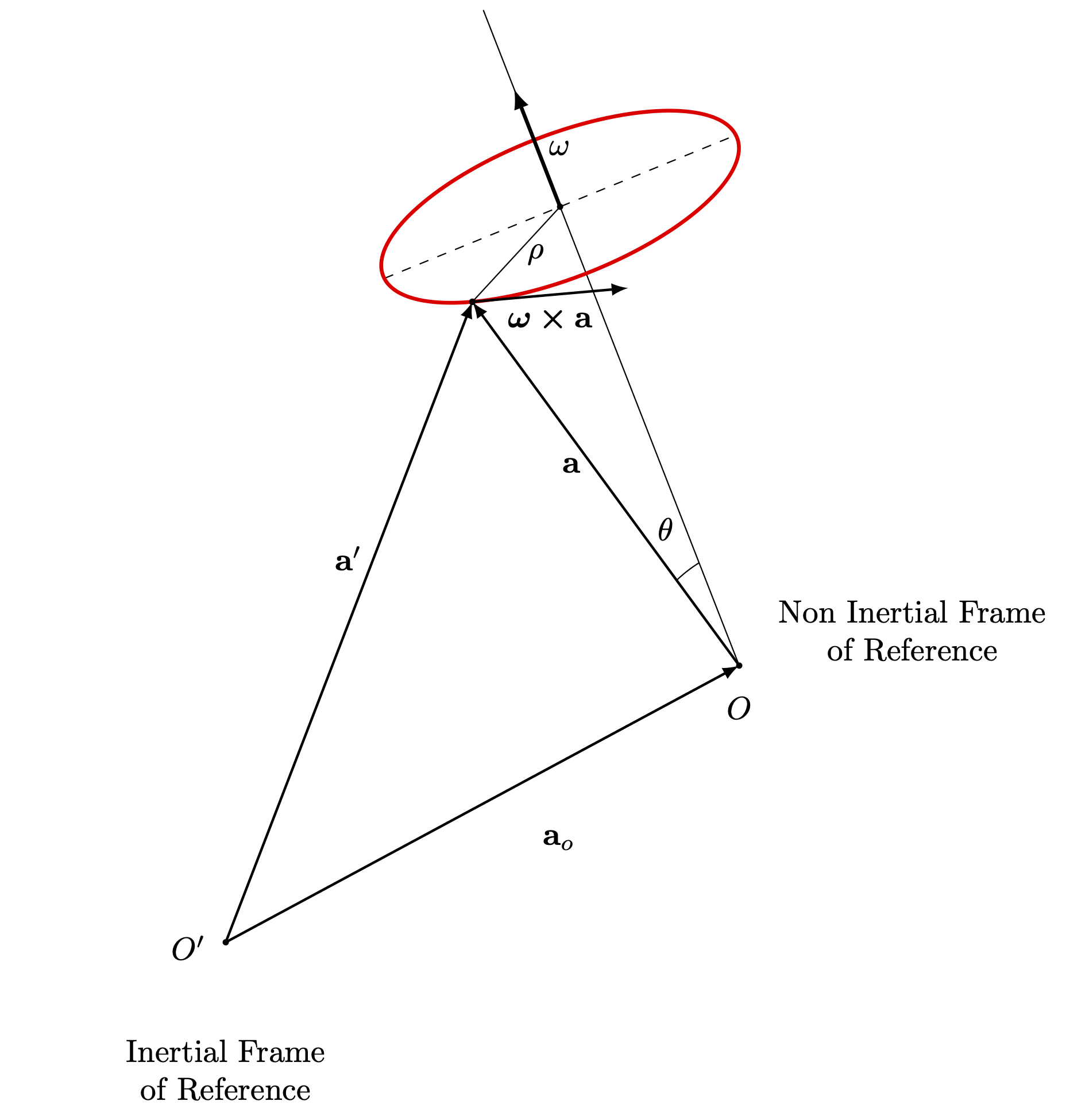The pseudo force (or fictitious force) due to the acceleration of a non-inertial frame of reference S'.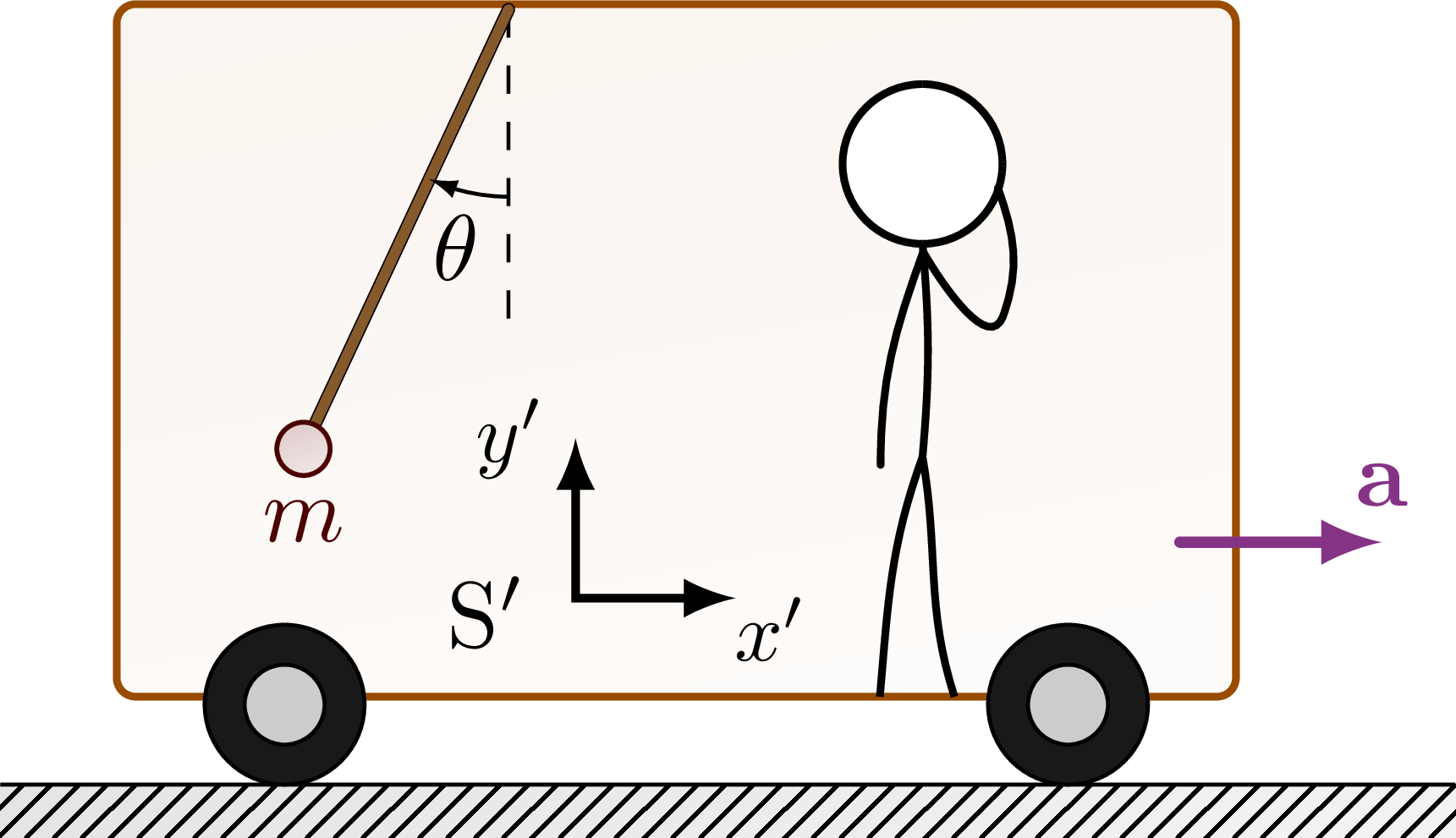 Force diagram of the mass in inertial 'lab' frame S:
Force diagram of the mass in inertial 'lab' frame S: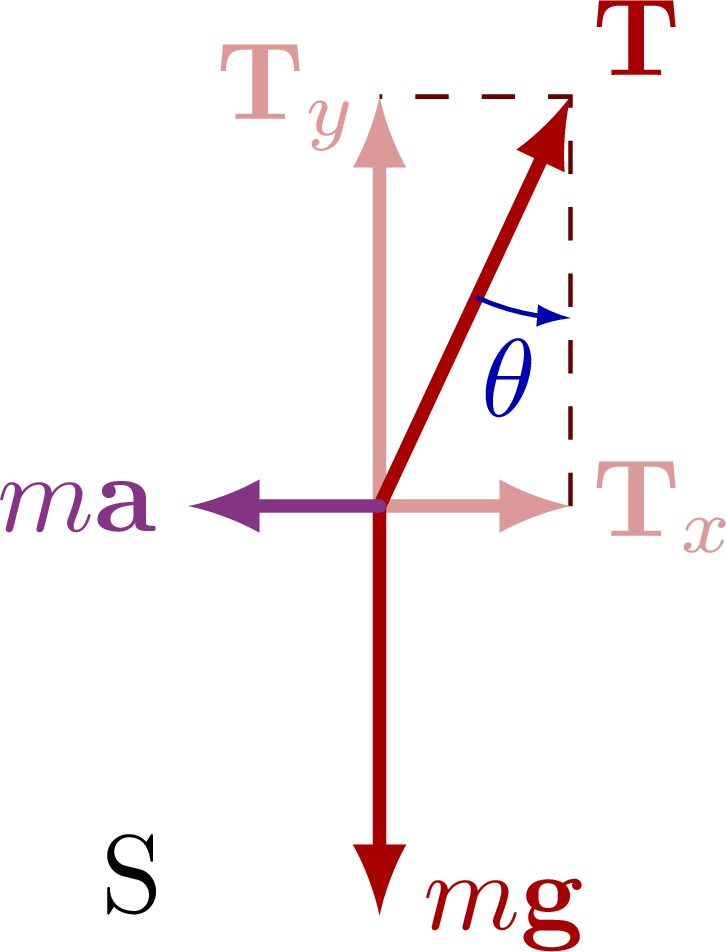 Force diagram in the non-inertial frame S' with the pseudo force F'.
Force diagram in the non-inertial frame S' with the pseudo force F'.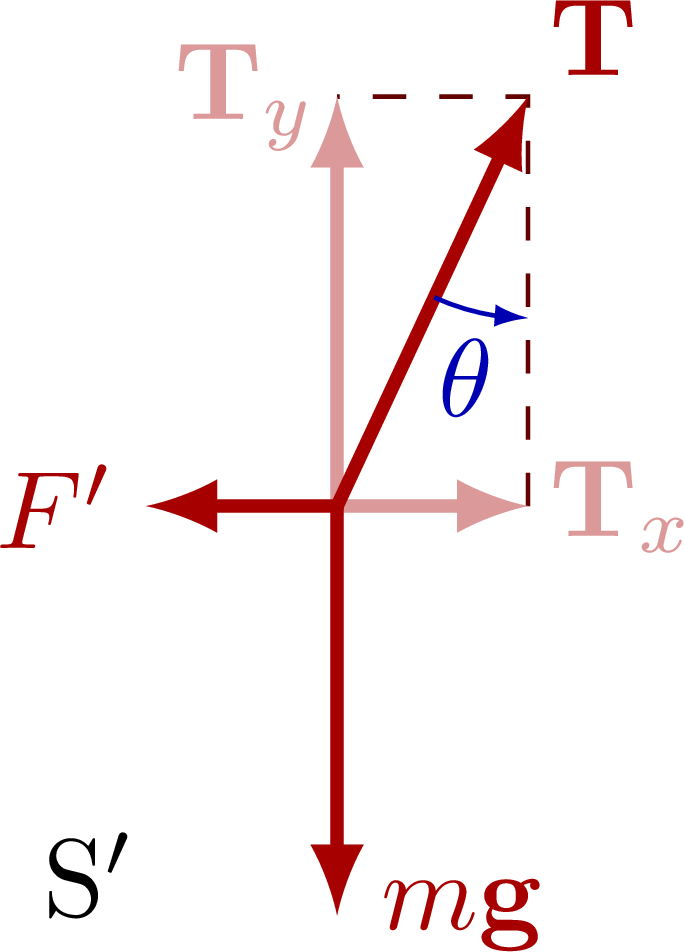
Edit and compile if you like:
% Author: Izaak Neutelings (September 2020)\documentclass[border=3pt,tikz]{standalone}\usepackage{amsmath}\usepackage{tikz}\usepackage{physics}\usetikzlibrary{calc}\usetikzlibrary{angles,quotes} % for pic\usetikzlibrary{arrows.meta} % for arrow size\usetikzlibrary{bending} % for arrow head angle\usetikzlibrary{patterns}\tikzset{>=latex} % for LaTeX arrow head\usepackage{xcolor}\colorlet{xcol}{blue!70!black}\colorlet{vcol}{green!45!black}\colorlet{acol}{red!50!blue!80!black!80}\tikzstyle{vvec}=[->,very thick,vcol,line cap=round]\tikzstyle{avec}=[->,very thick,acol,line cap=round]\colorlet{myred}{red!65!black}\tikzstyle{force}=[->,myred,very thick,line cap=round]\tikzstyle{Fproj}=[force,myred!40]\tikzstyle{ground}=[preaction={fill,top color=black!10,bottom color=black!5,shading angle=20},fill,pattern=north east lines,draw=none,minimum width=0.3,minimum height=0.6]\tikzstyle{mass}=[line width=0.5,red!30!black,fill=red!40!black!10,rounded corners=1,top color=red!40!black!20,bottom color=red!40!black!10,shading angle=20]\tikzstyle{rope}=[brown!70!black,line width=1,line cap=round] %very thick\tikzstyle{myarr}=[-{Latex[length=3,width=2]},thin]\def\rope#1{ \draw[rope,black,line width=1.4] #1; \draw[rope,line width=1.1] #1; }\def\car{\draw[thick,rounded corners=2,orange!60!black,top color=orange!70!black!6,bottom color=orange!70!black!2,shading angle=10](0,1.1*\CR) rectangle++ (\CW,\CH);\fill[black!20](0.15*\CW,\CR) circle(\CR) (0.85*\CW,\CR) circle(\CR);\draw[black,fill=black!90,thin,even odd rule](0.15*\CW,\CR) circle(\CR) circle(0.5*\CR)(0.85*\CW,\CR) circle(\CR) circle(0.5*\CR);}\begin{document}
Click to download: reference_frame_noninertial.tex • reference_frame_noninertial.pdf
Open in Overleaf: reference_frame_noninertial.tex



